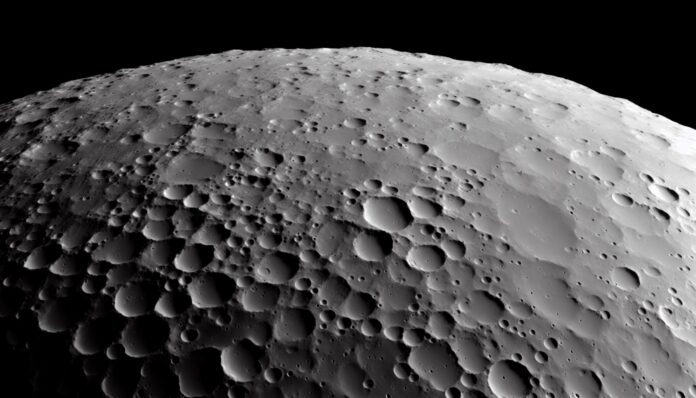The Evolution of Mars Imagery: A New Perspective on the Red Planet
NASA’s pursuit of Mars exploration has radically reshaped humanity’s view of the Red Planet. What began as a quest for knowledge evolved into a journey marked by groundbreaking technological innovations, especially in the field of imaging. Most importantly, these advancements have transformed Mars from a distant, mysterious dot into a richly detailed world, revealing landscapes that were once the subject of science fiction.
Because imaging technology has advanced steadily, our understanding of Mars continues to deepen and expand. Therefore, both scientists and the public are able to appreciate the stark contrasts and unusual beauty of this arid world. Furthermore, the integration of these high-resolution images into educational curricula and research projects has brought Mars closer to home, sparking curiosity and inspiring future generations to learn more about planetary science.
From Blurry Beginnings: The Mariner 4 Milestone
In 1965, the Mariner 4 mission marked a historic turning point by capturing the first close-up images of Mars. These 21 black-and-white photos, although blurry by today’s standards, broke new ground in space exploration. Most importantly, they presented the world with its first tangible view of another planet, shifting perceptions from speculative maps to scientifically validated images.
Because the image data was processed slowly, engineers even developed a unique color-by-numbers approach to breathe life into these early snapshots. This creative workaround not only provided a basic color perspective but also captured the public’s imagination. In this way, Mariner 4 set the stage for more advanced imaging techniques, as detailed in sources like the OpenTools article and NASA’s own historical archives.
Pioneering Surface Views: Viking’s Breakthroughs
The Viking 1 mission in 1976 brought another transformative leap forward in Mars exploration. The detailed surface-level photographs it provided revealed a rocky, arid landscape that was both alien and captivating. Most importantly, these images dispelled myths about Mars, demonstrating that the planet was far from the canal-filled paradise once imagined by early astronomers.
Because Viking’s stationary landers delivered such comprehensive data, scientists were able to study Martian geology with a new level of detail. Therefore, researchers now had the necessary context to understand the planet’s volcanic and tectonic history, paving the way for future missions. As discussed on NASA’s JPL site, these early breakthroughs continue to influence current exploration strategies.
The Rise of Orbiters and Rovers: Imaging Revolution
The launch of orbiters such as the Mars Reconnaissance Orbiter (MRO) and rovers like Spirit, Opportunity, Curiosity, and Perseverance signified the dawn of high-definition Mars imaging. These orbiters offer breathtaking, wide-scale views that monitor craters, canyons, and dunes with unprecedented clarity. Most importantly, these images allow scientists to identify features that hint at Mars’ ancient watery history.
Because rover-mounted cameras are equipped with a variety of lenses—from wide-angle hazard avoidance systems to high-resolution panoramic imagers—they provide detailed insights into the Martian surface. Therefore, researchers can generate 3D maps of the terrain, identify mineral compositions, and even capture self-portraits of the rovers in action. Besides that, these imaging tools are integral to planning safer exploration routes and understanding environmental conditions, as outlined by NASA Science and related resources.
Transforming Science and Public Engagement
Today, Mars stands as the most thoroughly imaged planet after Earth, with imaging technology fueling both scientific discovery and public engagement. Most importantly, NASA’s commitment to open data has enabled students, researchers, and enthusiasts to explore Mars almost in real time via vast online image repositories. Because of this, anyone interested can witness seasonal weather changes or geological shifts on the Martian surface.
Therefore, the democratization of this high-quality imaging data not only enhances scientific research but also inspires art, education, and community projects. As underscored in Space Launch Schedule, widespread access to high-definition images fosters a global dialogue about Mars’ future exploration, demonstrating that public engagement is as crucial as technological development.
Future Horizons: Where Imaging is Headed
Looking ahead, imaging innovations are set to continue shaping Mars exploration in groundbreaking ways. Most importantly, future missions promise to include hyperspectral imaging, next-generation lidar, and even drone-based platforms—all designed to probe beneath the surface of Mars. Because these technologies will capture layers of data previously unseen, they are expected to unveil hidden geological stories and clues about past water activity on the planet.
Therefore, as NASA prepares for long-term robotic and eventual human missions, advanced imaging will play a pivotal role in ensuring mission safety, selecting optimal landing sites, and assessing in-situ resource utilization opportunities. In summary, each new technological upgrade transforms our understanding of Mars and ensures that every mission builds upon the last, as elaborated in the historical overview of Mars exploration provided by NASA’s 25 Years of Continuous Robotic Mars Exploration page.
Conclusion: A New Era of Martian Exploration
In conclusion, advances in NASA imaging technology have not only revolutionized how we see Mars but have also deepened our understanding of its past and potential for future discovery. Most importantly, each leap in camera technology ignites further innovation—driving exploration that is as methodical as it is inspirational.
Because every image tells a story, the continuous refinement of these technologies propels scientific inquiry, inspires international collaborations, and engages a broad audience eager to learn more about our celestial neighbor. In this way, Mars remains a symbol of both the unknown and the limitless possibilities of human exploration.
References
- How NASA’s Imaging Tech Changed Our View of Mars Forever
- Advances in NASA Imaging Changed How World Sees Mars
- Mars – NASA Science
- Advances in NASA Imaging Changed How World Sees Mars – Space Launch Schedule
- 25 Years of Continuous Robotic Mars Exploration – NASA



